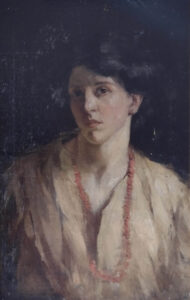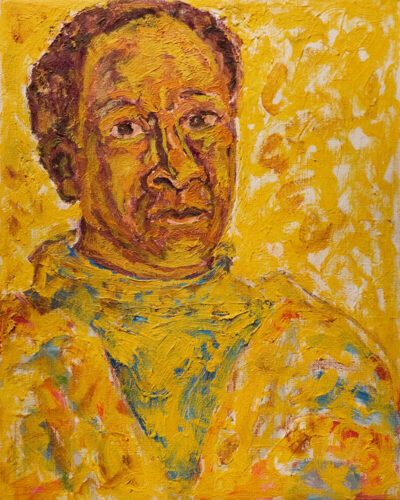This exhibition is part of the Shelley and Donald Rubin Exhibition Series.
January 30 – May 4, 2025

Catherine Wiley (Coal Creek, Tennessee 1879-1958 Norristown Pennsylvania)
Self-Portrait, oil on canvas
Private Collection of Diana Wiley Blackledge
At first glance the lives and works of Catherine Wiley and Beauford Delaney may appear incongruent. A closer examination of each reveal two artistic journeys with shockingly similar goals, aspirations and challenges. The dichotomy of the lives and brilliance of Catherine Wiley and Beauford Delaney is a fascinating riddle to the art historian. The two shared geographical origins and an early mentor in Lloyd Branson. Their respective journeys toward success showed rather a number of parallels but above all it was their brilliant artistic journeys challenged by mental illness that bonded the two with both dying in mental institutions.

Beauford Delaney (Knoxville 1901-1979 Paris), Self-Portrait, 1964, oil on canvas, 16 1/8 x 13 inches, signed; Tennessee State Museum, Nashville, TN, Tennessee Historical Society Collection (2001.46) © Estate of Beauford Delaney, by permission of Derek L. Spratley, Esquire, Court Appointed Administrator, Courtesy of Michael Rosenfeld Gallery LLC, New York, NY
The narrative of Anna Catherine Wiley has previously begun with a litany of proud and noble ancestors coupled with the assumption of storied Southern wealth from coal mines. As a proud and genteel yet headstrong spirit Wiley strived to achieve artistic acclaim in spite of the limitations imposed by gender in the late 19th and early 20th centuries. After studies in New York Wiley returned to her native Knoxville to serve as one of the first instructors of the Fine Arts Department at the University of Tennessee. By the second decade of the twentieth century she would exhibit work throughout the country and won numerous awards. However, by the 1920s as Wiley endured the loss of numerous family members and her great mentor Lloyd Branson Wiley’s mental health sharply declined. By the end of the decade she was committed to the State Hospital for the Insane in Norristown, Pennsylvania where should would remain until her death in 1958.
Delaney was born in 1901 one of ten children but only four would survive to adulthood. His father was minister of the African Methodist Episcopal church and his mother a talented seamstress. In 1916 Beauford’s artistic promise was discovered by Wiley’s mentor, noted Knoxville artist Lloyd Branson By 1923 Branson urged Beauford to pursue his studies in Boston before later travels to New York and Paris. By the 1930s Delaney would exhibit work in significant venues such as the Whitney Studio Galleries (precursor to the Whitney Museum). In Paris Delaney’s work gained even greater acclaim. However, like Wiley Delaney’s mental health declined sharply in latter years. Under the guardianship of his closet friend James Baldwin, Beauford Delaney spent his final years at St. Anne’s Hospital in Paris where he died in 1979. A year earlier Delaney was the subject of a major retrospective at the Studio Museum in Harlem.
Today the work and legacy of both Wiley and Delaney have enjoyed renewed interest. Above all it is hoped this exhibition will bring forth a narrative that imbues each subject with dignity and respect while reinforcing their most innate artistic brilliance. With the passing of time records previously inaccessible to earlier scholars have now entered the public domain. The scholarship resulting from this exhibition seeks to shed an objective true light on a number of topics previously ignored or unseen as they relate to the life and work of Catherine Wiley and Beauford Delaney.
This exhibition is curated by John Daniel Tilford, Curator of Collections, OUMA with contributions from Ms. Ariel Saah ’25, the Ten10 Curatorial Intern for Diversity in Museum Leadership, OUMA and is part of the Shelley and Donald Rubin Exhibition Series.
This exhibition catalog and related research was made possible through the generous support of:


